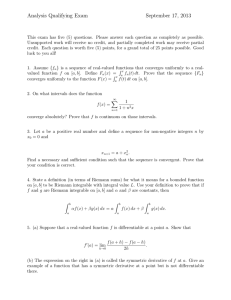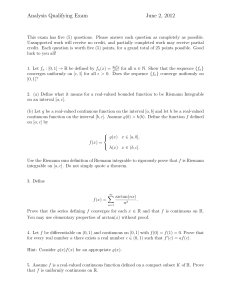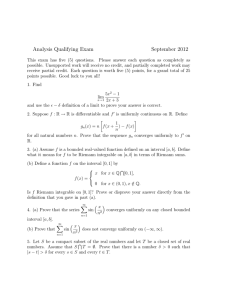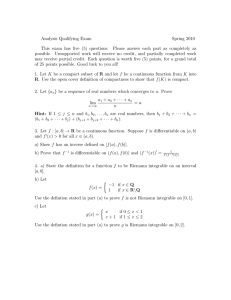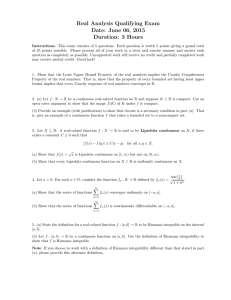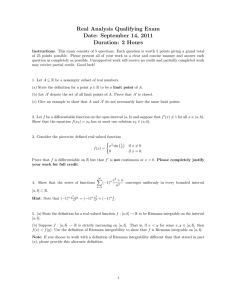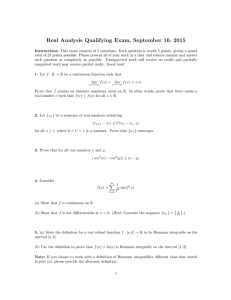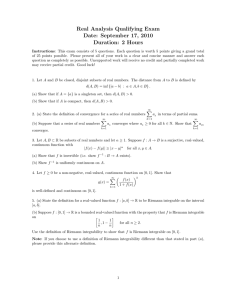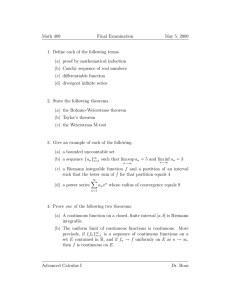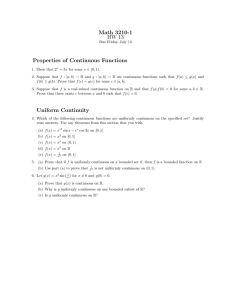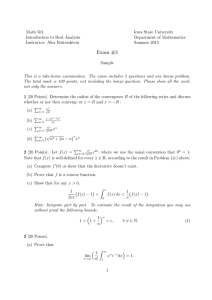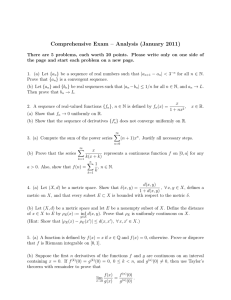Analysis Qualifying Exam June 8, 2013
advertisement
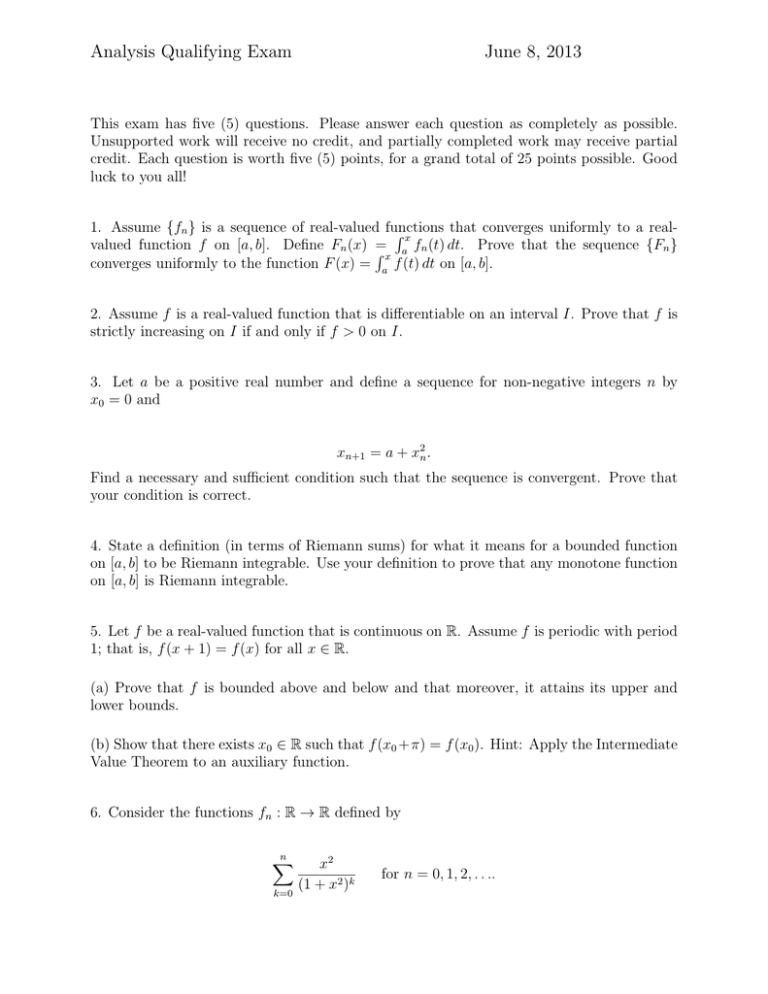
Analysis Qualifying Exam
June 8, 2013
This exam has five (5) questions. Please answer each question as completely as possible.
Unsupported work will receive no credit, and partially completed work may receive partial
credit. Each question is worth five (5) points, for a grand total of 25 points possible. Good
luck to you all!
1. Assume {fn } is a sequence of real-valued functions
that converges uniformly to a realRx
valued function f on [a, b]. Define Fn (x) R= a fn (t) dt. Prove that the sequence {Fn }
x
converges uniformly to the function F (x) = a f (t) dt on [a, b].
2. Assume f is a real-valued function that is differentiable on an interval I. Prove that f is
strictly increasing on I if and only if f > 0 on I.
3. Let a be a positive real number and define a sequence for non-negative integers n by
x0 = 0 and
xn+1 = a + x2n .
Find a necessary and sufficient condition such that the sequence is convergent. Prove that
your condition is correct.
4. State a definition (in terms of Riemann sums) for what it means for a bounded function
on [a, b] to be Riemann integrable. Use your definition to prove that any monotone function
on [a, b] is Riemann integrable.
5. Let f be a real-valued function that is continuous on R. Assume f is periodic with period
1; that is, f (x + 1) = f (x) for all x ∈ R.
(a) Prove that f is bounded above and below and that moreover, it attains its upper and
lower bounds.
(b) Show that there exists x0 ∈ R such that f (x0 +π) = f (x0 ). Hint: Apply the Intermediate
Value Theorem to an auxiliary function.
6. Consider the functions fn : R → R defined by
n
X
k=0
x2
(1 + x2 )k
for n = 0, 1, 2, . . ..
Compute an explicit formula for f (x) = lim fn (x). Does the sequence converge uniformly
n→∞
on [−2, 2]?
